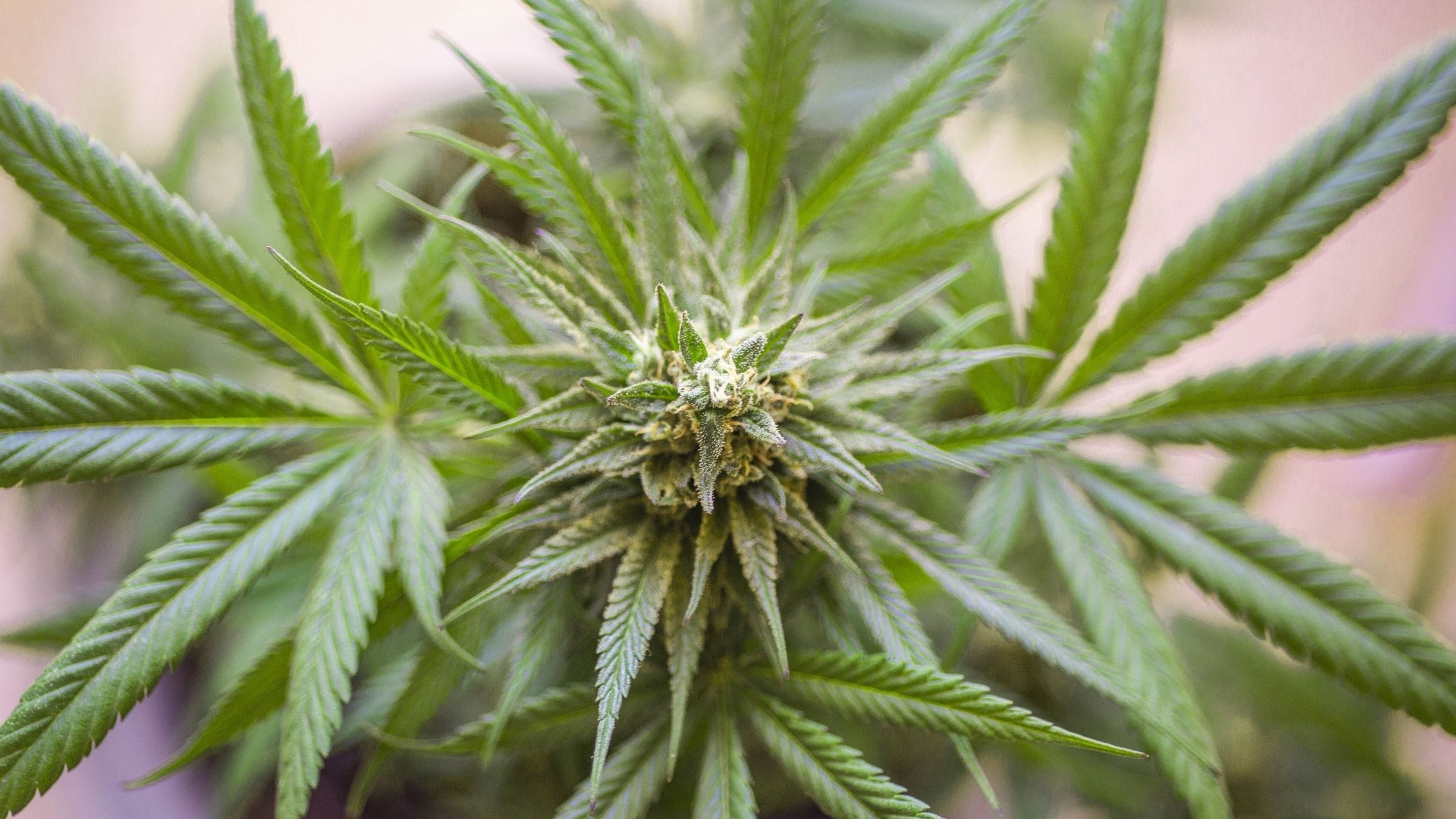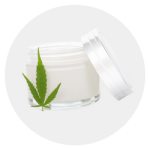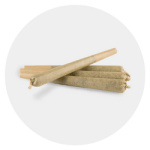THC potency can vary from close to 0% in hemp-derived products to as high as 90+ percent in marijuana concentrates.
The potency of THC is not static, it is ever-changing and ever-flowing depending on a number of factors.
That being said, there are various factors that impact THC levels and potency. It begins with the plant itself, as well as environmental factors. In fact, it may start with the seed genetics, and change depending on variations in the plant’s environment.
This topic can be quite complex and scientific, but we will get into the basics in this article. This guide will break down how to calculate THC content, the various factors that contribute to THC potency, and other cannabinoids that can contribute to the potency of a cannabis strain.

How Much THC is in Weed? Let’s Get Into It
The THC content in cannabis can vary greatly across strains.
It can also change over time. THC content in different strains begins with the seed genetics, however, genes can change over time depending on various environmental factors.
In fact, when THC potency levels are tested, it is important that the THC flower is stored correctly. If flower is stored incorrectly, the cannabinoids like THC and others will begin to degrade. This will result in a lower potency than the flower originally began with.
With that being said, there are many factors to consider to accurately determine the potency of a given cannabis strain.
For example, when THC levels were measured for the first time ever in the 1960s, the results only came out to about 4-5%. However, these figures are now known to be slightly off. This is because the testing and storage methods used back then often lead to the degradation of the cannabinoid content and aren’t up to par with modern testing methods.
However, there is little doubt that the THC content in many strains of cannabis grown today is significantly higher than it was decades ago. As recreational cannabis is legalized in more states more breeders are developing new high THC strains and competing for the most potent buds.
Evolution of THC Potency in Cannabis
According to the Drug Enforcement Administration (DEA), marijuana seized in 2018 had a THC potency of around 15%. It is now common to find cannabis in state-legal dispensaries containing more than 20% THC. Godfather OG, a very popular strain, contains as high as 34%.
Furthermore, cannabis potency varies greatly when it comes to products. The THC content in a given cannabis plant is completely unrelated to cannabis products unless you are talking about THC flower.
When it comes to concentrates, edibles, tinctures, and topicals, the manufacturer can add or decrease the THC content by working with a THC concentrate. These cannabis products are commonly made with concentrate, which will always have a higher THC content than a single plant can offer. Concentrates are often made with multiple cannabis plants or large amounts of flower.
The process of making cannabis concentrates involves extracting the cannabinoids and terpenes from the flower and then discarding any remaining plant material. The end result is usually a cannabis concentrate that is at least 70% THC but can be up to 90% THC in more potent extractions.
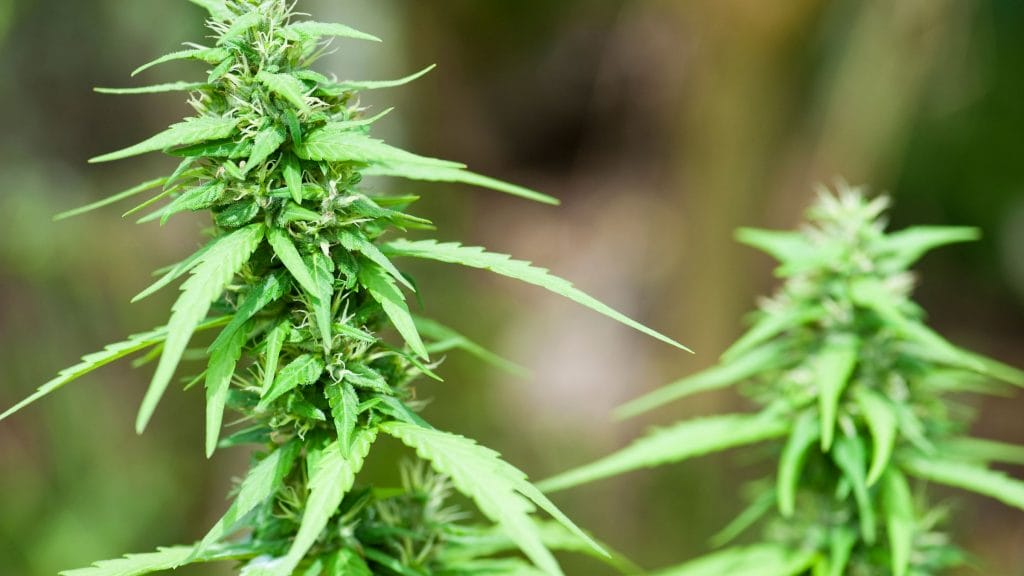
How Much THC Is In Weed? How Is It Calculated?
THC content in cannabis can indicate its potency. This is why it is essential that customers know what percentage they are purchasing before they make any decisions.
Most states that have legalized marijuana require that all products be tested and explicitly defined on labels.
However, it is important to note that there aren’t any industry standards for cannabis product labeling and testing. This means that the information on the labels may differ from one state to another and from product to product.
In general, product labels should have a “Potency Analysis” that includes figures for THC, and THCA, as well as “Total THC” and CBD, CBDA, and “Total CBD.”
Understanding the differences among these THC percentages is the first step to understanding how THC is calculated.

THCA vs. THC: Key Differences
A cannabis product label will show that there is much less THC than THCA. This is a non-intoxicating cannabinoid. The THC in marijuana flower may be as low as 1%, but it could contain more than 20% THCA.
This is because THC is made from THCA via decarboxylation. This process is essentially using heat to convert THCA to THC. This process can also occur naturally over time.
The presence of THCA in raw cannabis flower is the reason why you won’t necessarily get high from ingesting raw cannabis. Heat must be applied to the cannabis flower to convert the THCA to psychoactive THC.
The amount of THC present in dry cannabis flower after decarboxylation is largely what determines its potency.
This is what we are dissecting in this article. It is also known as the “total THC” content.
The total THC content on a cannabis product label will generally be lower than the THCA levels. This is odd because we might expect ‘total THC’ to be the sum of THC and THCA.
However, this is not the case for two reasons.
Firstly, THC is much lighter than THCA. THC weighs 87.7 percent of THCA after conversion. THC is essentially THCA with some missing parts.
Second, decarboxylation isn’t always efficient or constant. THC conversion is affected by many factors like temperature, exposure time, and heating device (e.g. a vaporizer or open flame). Some THCA molecules don’t always convert to THC. But, exposure to high heat will cause THC to be converted into CBN.
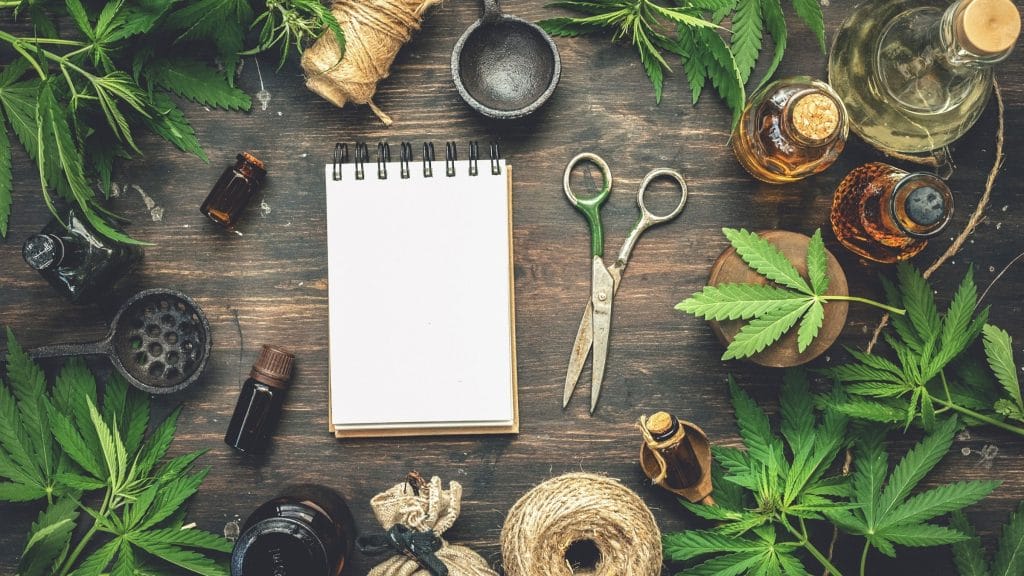
How Much THC Is In Weed? A Simple Equation To Get The Most Accurate THC Content
For those of you looking for the most accurate and exact calculations, this formula should help you out. As we mentioned earlier, there are many factors involved and many factors to consider.
That being said, determining the exact THC conversion can prove to be quite difficult. Some labs have estimated that 75% of THCA will be converted to THC. However, this is a high limit.
To calculate THC content, you must first take into account the difference in weight between THC and THCA, then consider the efficiency of the THC transformation process, before adding the THC present in the cannabis product.
The resulting equation is as follows:
(0.75 x 0.877 x %THCA) + %THC = Active and consumable THC content
If you had a cannabis product with 20% THCA and 1% THC, you’d end up with this:
(0.75 x 0.877 x %20THCA) + %1THC = 14.155% Active and consumable THC content
Although this process is complex and can be imprecise, this method is one the most accurate method to determine active THC in cannabis flower.

How Much THC Is In Weed: What kind of THC Is In Marijuana?
THC is sometimes used to refer to delta 9 THC. However, THC doesn’t consist of just one compound. It has many forms, and is also referred to as chemical analogs.
Delta 9 THC is the most famous, potent, and abundant analog in cannabis. However, all THC analogs and cannabinoids share similarities in one way or another.
Even these small structural differences will have a profound effect on physiological responses and the overall effect.
#1 Delta-9 THC “THC”
The psychoactive effects of delta-9 THC are due to a unique double bond structure on its molecular chain. As the name may suggest, the double bond for delta-9 THC is found in the 9th carbon atom.
Delta-9 THC binds to the CB1 receptor within the body’s endocannabinoid system (ECS) which causes its psychoactive effects.
In addition, delta-9 has a 5-term side alkyl chain. This is simply a series of five carbon atoms that contribute to the compound’s strong effects on the body.
Aside from the well-known recreational uses of this cannabinoid, there are many therapeutic benefits of using delta-9 THC for various conditions. It has been known to help with nausea, increasing appetite, pain management, and depression and anxiety.
#2 THCV (Tetrahydrocannabivarin)
This is the second most abundant kind of THC found in cannabis, yet it is one of the least well-known cannabinoids.
It is a byproduct of THCA’s decarboxylation but differs from Delta-9 THC by having a 3-term side alkyl chain instead of the 5-term one that delta-9 THC has.
Moreover, this means that THCV doesn’t bind as intensely as D9-THC to the body’s CB1 receptors. This results in less pronounced effects.
This is only the case in low doses though. In high doses, THCV is comparable to delta-9 in its psychoactive effects.
In addition, THCV is known as an appetite suppressant, and some recent studies have shown that it holds some promise when it comes to type 2 diabetes.
#3 THCP (Tetrahydrocannabiphorol)
Tetrahydrocannabiphorol, commonly known as THCP is a fairly new cannabinoid on the scene. It was only discovered in 2019.
The main difference between THCP and delta-9 THC is that THCP has two extra carbon atoms on its alkyl side chain.
For the most part, a longer side chain results in a more pronounced ECS receptor reaction. So, in general, THCP is known to be stronger than D9 THC when it comes to potency.
However, it occurs in very small amounts naturally in the cannabis plant, whereas D9 THC is abundant.
Due to its recent discovery, not much is known about the therapeutic benefits associated with THCP.
#4 THCC Tetrahydrocannabiorcol
This is a non-psychoactive compound found in cannabis pollen. Some early studies show that it might provide stronger pain-relieving effects than CBD.
While THCC is indeed an analog of THC the effect profile is more similar to that of CBD.
THCC does not bind well to CB1 and CB2 receptors, but it is unique in its ability to bind to vanilloid receptors. These receptors regulate pain, body temperature, and nerve signals.
Although more research is needed, preliminary evidence suggests that TRPA1 mediators (like THCC) could be important painkilling compounds for many ailments.
#5 Delta-8 THC
Delta-8 is arguably the most popular cannabinoid next to CBD. It is a milder version of delta-9 THC, about half as potent.
In addition to being half as potent, it is known to not produce anxiety and panic which are common side effects of ultra-potent D9 THC.
Delta 8’s double bonds are on the eighth carbon atom according to the delta numeric arrangement.
The mild psychoactivity with fewer side effects is to blame for delta-8’s rampant popularity. However, delta-8 only occurs in very small amounts in the cannabis plant, so it is common that it is extracted from hemp-derived CBD through a somewhat complicated process.
Delta-8 is known for its many therapeutic benefits. Among them are pain relief, appetite stimulants, relaxants, and more.
#7 Delta-10 THC
Delta 10 THC can also be found in small amounts in cannabis. As the name suggests, its double bond is located on the tenth carbon atom.
The similarities to delta 8 are not limited. When you contrast delta 10 THC with delta 9 THC the former has less powerful psychoactive effects and causes less anxiety and paranoia.
Many users claim that delta-10 is more energizing than delta-8. Delta 8 is more like an Indica strain, and delta 10 is more like a Sativa.
How Much THC Is In Weed? Which Factors Affect THC Content?
Many factors affect the overall THC content in cannabis, including genetics and environment.

#1 Genetics
When it comes to determining different factors that contribute to THC potency, genetics are the first consideration.
Each strain is unique in its genotype, which acts as a blueprint of how it will grow. It also has a unique Phenotype that determines how the plant will react to environmental conditions.
#2 Additional Enzymes
The presence or absence of certain enzymes is one of the most important genetic traits that can affect THC content. This determines the ratio of CBD to THC.
The higher the CBD content in a strain, the lower the THC. The general terms for cannabis strains include CBD-dominant (or THC-dominant), or balanced.
Both CBD and THC content are closely related as both can be produced from the same cannabinoid, cannabigerol. (CBG) is an acidic form of cannabigerol. CBGA molecules can be transformed into THCA (the precursor of THC) and CBDA (the precursor of CBD).
It depends on the presence or absence of an enzyme, which can exist in two forms. The first converts CBGA into CBDA, and the second CBGA converts into THCA. Which then decarbs into THC.
Depending upon their genetic code, some strains of cannabis have both forms of the enzyme. Others may only have one.
A cannabis strain that contains only the enzyme for converting CBGA to THCA will have more THC than CBD.
This strain is what recreational marijuana growers are looking for. Hemp farmers will only look for strains that activate CBD production with the other enzyme.
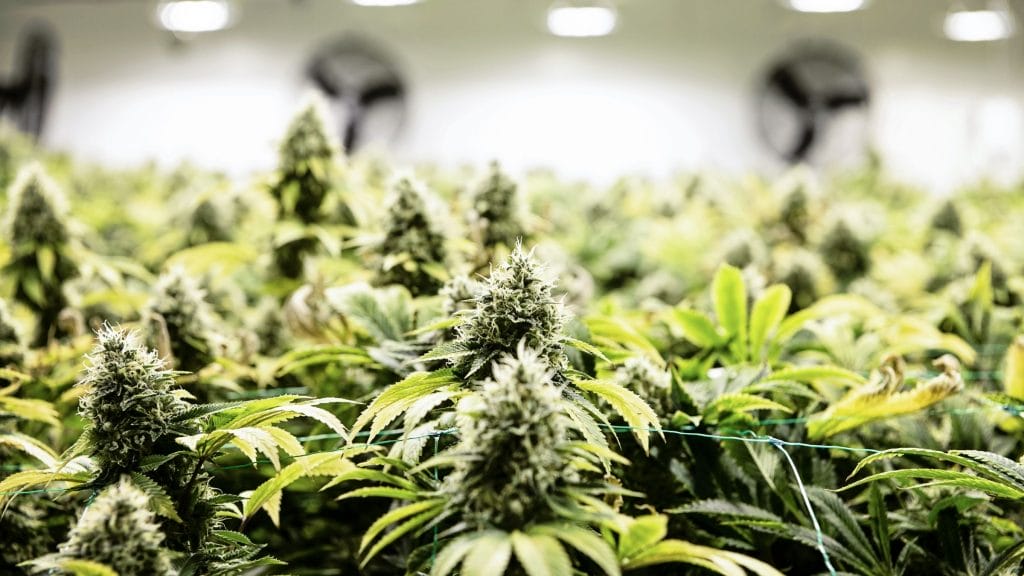
#3 Environment
After the seed or clone is planted, THC content is also affected by environmental factors.
However, Cornell University has found that environmental stresses play less of a role than previously thought.
Regardless, like with any plant, the environment plays a huge role in how well a plant grows and its phytonutrients, or in this case, cannabinoid content.
Some of the environmental factors include how the plant is grown (indoors vs. outdoors, soil vs. hydroponic), the availability of nutrients, the source and spectrum of light, pH and CO2 levels as well as temperature and humidity.
The cannabis plant will suffer from stress if it is exposed to poor environmental conditions. This can lead to a decrease in its ability and willingness to produce cannabinoids, THC included.
After the end of the growing cycle, the plant begins flowering. THC content will continue to fluctuate in response to environmental factors. Proper harvesting, processing, storage, and storage practices are all important to both determine and preserve THC content.
Is THC content important?
The short answer is yes.
THC is a potent psychoactive compound that can have profound effects on both the human psyche and body.
That being said, there are multiple factors to consider that contribute to the psychoactive effects of THC. Among these are a person’s genetics, weight, mental state, tolerance level, metabolism, and much more.
That is why it is essential to be aware of the THC potency in a given product and start low and go slow.
In addition, other contributing factors that influence potency are the presence of other cannabinoids in a given product as well as the terpene content. When all of these compounds are present in a cannabis product, this phenomenon is known as the “entourage effect”. This can be found in full-spectrum cannabis products and is said to be the most healing and therapeutic way to ingest cannabinoids.
Furthermore, THC potency is very important to be aware of. Always check for potency in any cannabinoid product you are buying and beware of concentrates and edibles that can be very potent.
If you happen to get too stoned, check out these tips to help you come back down to Earth: How To Sober Up From Being Too High
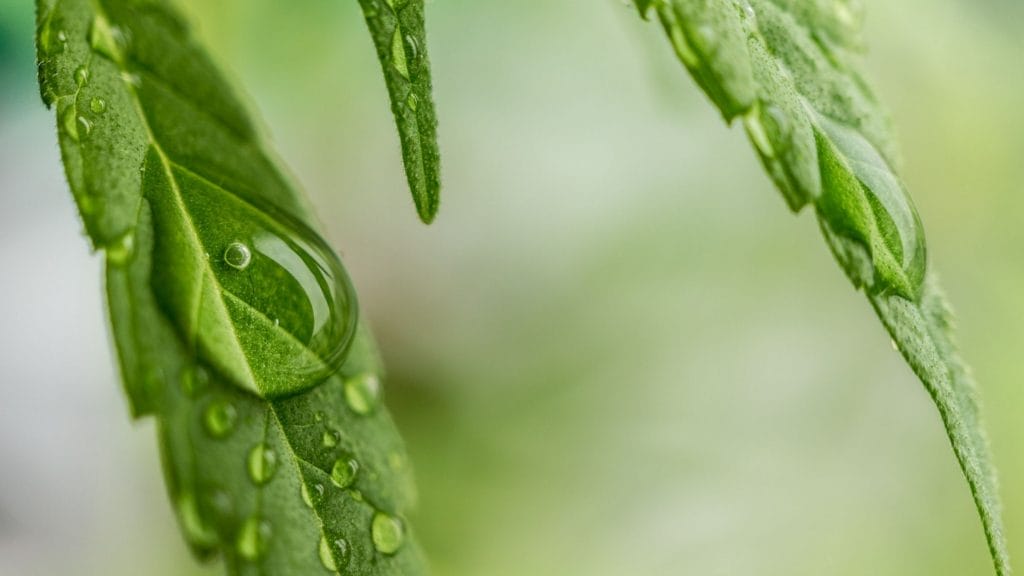
Takeaways: How Much THC Is In Weed?
There are many factors that can affect the THC content of marijuana.
Even then, these numbers are not constant or consistent. The amount of THC in marijuana depends on many factors, including the type of cannabis, genetics, the environment, and the number of overall cannabinoids found in the plant. Individual factors such as tolerance and mental health also play a significant role.
THC content can either be estimated or calculated with a more scientific method. However, if you’re truly concerned, you should consider using edibles and tinctures which are usually pretty accurately measured.
We hope you enjoyed this article on how much THC is in weed.
What’s your experience with THC potency in cannabis? Let us know!
References Used:
- Carlini, E. A. (2004). The good and the bad effects of (−) trans-delta-9-tetrahydrocannabinol (Δ9-THC) on humans. Toxicon, 44(4), 461-467.
- Abioye, A., Ayodele, O., Marinkovic, A., Patidar, R., Akinwekomi, A., & Sanyaolu, A. (2020). Δ9-Tetrahydrocannabivarin (THCV): a commentary on potential therapeutic benefit for the management of obesity and diabetes. Journal of Cannabis Research, 2(1), 1-6. [2]
- Andersson, D. A., Gentry, C., Alenmyr, L., Killander, D., Lewis, S. E., Andersson, A., … & Zygmunt, P. M. (2011). TRPA1 mediates spinal antinociception induced by acetaminophen and the cannabinoid Δ 9-tetrahydrocannabiorcol. Nature communications, 2(1), 1-11.
- Kruger, D. J., & Kruger, J. S. (2021). Consumer Experiences with Delta-8-THC: Medical Use, Pharmaceutical Substitution, and Comparisons with Delta-9-THC. Cannabis and Cannabinoid Research. [4]
- Kruger, D. J., & Kruger, J. S. (2021). Consumer Experiences with Delta-8-THC: Medical Use, Pharmaceutical Substitution, and Comparisons with Delta-9-THC. Cannabis and Cannabinoid Research.
- Ashton, H. E. A. T. H. E. R., Golding, J., Marsh, V. R., Millman, J. E., & Thompson, J. W. (1981). The seed and the soil: effect of dosage, personality, and starting state on the response to delta 9 tetrahydrocannabinol in man. British journal of clinical pharmacology, 12(5), 705-720.
- LaVigne, J. E., Hecksel, R., Keresztes, A., & Streicher, J. M. (2021). Cannabis sativa terpenes are cannabimimetic and selectively enhance cannabinoid activity. Scientific reports, 11(1), 1-15.[7]
- Citti, C., Linciano, P., Russo, F., Luongo, L., Iannotta, M., Maione, S., … & Cannazza, G. (2019). A novel phytocannabinoid isolated from Cannabis sativa L. with an in vivo cannabimimetic activity higher than Δ 9-tetrahydrocannabinol: Δ 9-Tetrahydrocannabiphorol. Scientific reports, 9(1), 1-13. [8]

